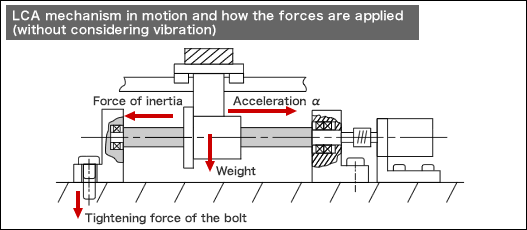#245 Mechanical Engineering and Automation Device Design - 11: Law of Motion - 1
A force is always applied to a moving object (movable body). The force applied to this movable body is the basic knowledge required for engineers to design mechanical devices. The law of inertia in particular is an important concept in designing high-speed drive mechanisms.
(1)Law of motion
1)Newton's first law --- sometimes referred to as the law of inertia
- Objects will remain in their state of motion unless an outside force acts to change the motion.
- A moving object (movable body) stays in motion at a constant velocity and an object at rest remains in the resting state, unless acted upon by an external force.
- This type of motion is called inertia and this law is often referred to as the law of inertia.

- For linear motion mechanism, it is necessary to design a control unit that applies a force to the opposite direction after reducing acceleration to zero at the termination point where the direction of reciprocating motion changes.
- This acceleration change requires an external force. At this time, the force of inertia acts near the termination point of reciprocating motion.
- Therefore, it is necessary to design a support structure strong enough to withstand the force of inertia.
- The following figure is an explanatory diagram of how the forces are applied to the ball screw driving mechanism.

- Positioning technology
- Designing and processing
- Sensor Technology
- Automation elements technology
- Clean room technology
- Design hints
- Design tips
- Designing and Machining
- Drive mechanism design
- Hints on designing
- Linear Motion Components
- Locating Technology
- Manufacturing technology
- Motion mechanism design
- Pneumatic Drives
- Production Technology
- Technology Outlook
- General description
- Low-cost automation and materials
- Transfer LCA
- #333 Know-how on automation: Pressurized heating technology - 5: Multilayer pressurized heating process technique
- #332 Know-how on automation: Pressurized heating technology - 4: Points to remember when designing mechanism of pneumatic pressurization method
- #331 Know-how on automation: Pressurized heating technology - 3: Pneumatic pressurization method and pressure profile
- #330 Know-how on automation: Pressurized heating technology - 2: Pressurization method and pressure profile
- #329 Know-how on automation: Pressurized heating technology



